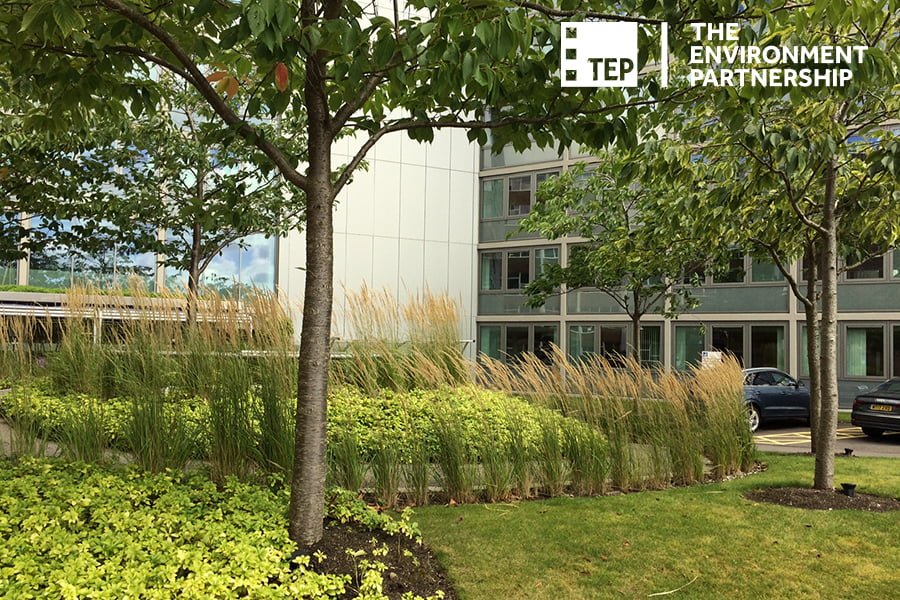
Following the 2019 publication of DEFRA’s objectives for a mandatory biodiversity net gain (BNG) policy in England, Natural England recently published Biodiversity Metric 3.0 and the long awaited Environment Bill is anticipated to receive royal assent in autumn 2021. TEP’s Associate Ecologist Anne Pritchard takes a look at the key points of the new policy.
10% Uplift Needed
BNG will be mandated in the forthcoming Environment Bill, with a minimum 10% net gain required for most developments. Biodiversity Metric 3.0 will be the key tool for measuring BNG. However, projects which are already using the previously published Biodiversity Metric 2.0 (beta test version) can continue to use this version for continuity.
The metrics encompass a wide range of habitat types that can be included in development proposals, including green and brown roofs, SUDS features and street trees. It also includes metrics for linear habitats like hedgerows and watercourses. In fact the accompanying guidance document references two research papers about hedgerows published by one of our very own Principal Ecologists, Dr Mike Walker!
Some developments exempted
Exemptions will apply to constrained, small and brownfield sites depending on qualifying criteria. Nationally significant infrastructure and marine projects are currently exempted while further development of workable approaches is undertaken with stakeholders. These will eventually be included.
On or Off-Site?
The guidance is to follow the “mitigation hierarchy” so that developers should demonstrate that they have tried to maximise habitat retention and creation on site, before considering off-site locations. If they choose an off-site location, the Government expects a range of offset providers to offer their land, for example local authorities, wildlife trusts or bespoke offset providers.
How long must BNG schemes be managed for?
Ongoing maintenance, monitoring and evaluation of BNG schemes will be required for a minimum of 30 years, encouraging longer term protection where this is acceptable to the landowner or via a conservation covenant. Government will work with local authorities to ensure that BNG monitoring and evaluation mechanisms are straightforward and consistent and that it is aligned with existing processes.
Tariffs
No new standard tariffs will be introduced for loss and offsetting of biodiversity although government will provide a supply of statutory biodiversity units (cost per unit still being considered) into the compensation market, should local habitat creation opportunities not meet demand.
Spatial Planning Changes
The Environment Bill will introduce new duties to support better spatial planning for nature through the creation of Local Nature Recovery Strategies (LNRSs). Baseline mapping for each LNRS will encourage consideration of the wider benefits of habitats, help identify strategic areas for offsite compensation schemes and be used in such matters as disputed baselines. A public record of government and local habitat creation projects will be set up and maintained for transparency and audit purposes.
Within the planning system, government will ensure that local authorities have access to the right training, guidance, ecological expertise and systems required to deliver BNG, providing funding where required. With respect to developers, government acknowledges the need for clarity, consistency and simplicity and will publish practical guidance for the sector.
For more information on how TEP can help with your development, read the latest edition of The Briefing.








